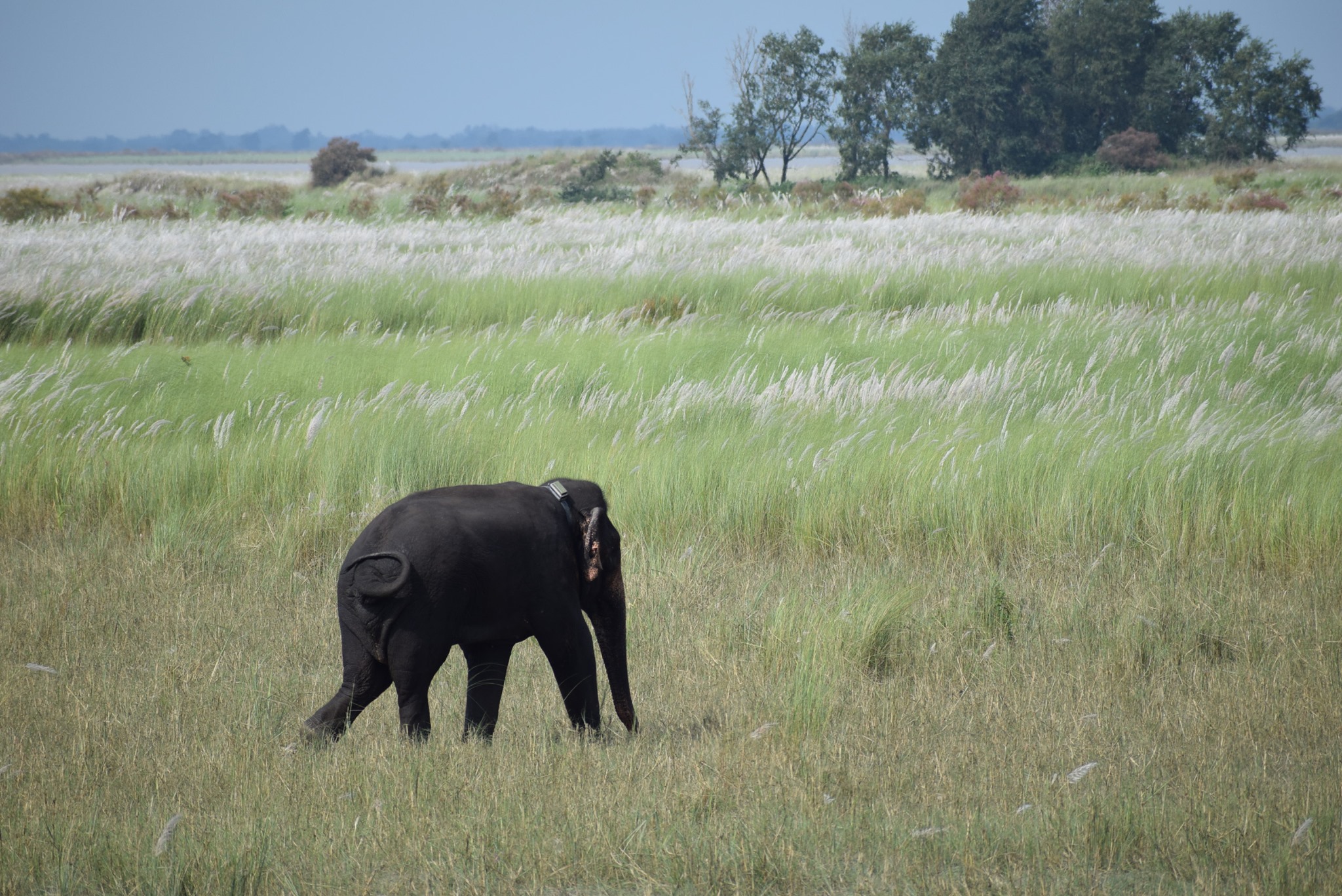Meet Nepal’s Elephant on ‘Death Row’
December 29, 2020Pramod Yadav, a 28-year-old farmer, was busy watering his wheat field in Nepal’s Sunsari district near the Koshi Tappu wildlife conservation area on a foggy December morning when a makhna (tuskless) elephant approached him. Before Yadav could flee, the elephant trampled him to death.
The elephant who attacked Yadav is Makuna, who has been living in the conservation area and is estimated to be between 25 and 30 years old. Makuna made his way to Koshi Tappu through the Chure foothills of southern Nepal about five years ago. Makuna has been wreaking havoc ever since and is considered responsible for the massive destruction of life and property in Sunsari and other districts adjacent to the conservation area.
Yadav’s death triggered outrage among residents of Sunsari. They demanded that the “mad” elephant be executed. Conservationists and wildlife experts, however, claim that Makuna is an adolescent elephant in a state of musth— heightened sexual awareness when male elephants tend to be the most aggressive.
“Midsummer and midwinter are key periods to be on the lookout for elephants in musth,” Ashok Kumar Ram, chief conservation officer at Khaptad National Park and an expert in elephant behavior, told VICE World News.
“During these times, the elephant’s eyes leak, he tends to be agitated, and it is good to stay as far as possible. However, due to lack of awareness, people tend to prod at the elephants, scream, and situations can really escalate.”
Makuna was likely in musth when he attacked Yadav, but residents of Sunsari believe that the attack was not a one-off event. They hold Makuna responsible for killing over seven people in the past five years.
Phanindra Mani Pokharel, chief district officer of Sunsari, told VICE World News that Makuna has destroyed many homes and crops in the Koshi buffer area, and he has been enough of a nuisance that executing him is the only option.

But Haribhadra Acharya, information officer at the department of national parks and wildlife conservation, believes that Makuna may be a scapegoat for the damage elephants have collectively caused in the region. “Many elephant attacks happen at night, or when it is foggy, and visibility is low. It is difficult to recognise the specific elephant responsible for hurting people and damaging property. While Makuna might have been responsible for many of the incidents, it is just as likely that different elephants were responsible and punishing Makuna is a kind of revenge,” Acharya said.
People’s anger at the elephants in Koshi Tappu is in part due to the rise in the human-animal conflict in the last few years. Residents of Sunsari claim that wild animals from the Koshi Tappu wildlife reserve are responsible for the destruction of crops worth around 12.5 million Nepalese rupees (approx $100,000) each year. Because of the bureaucratic hurdles involved, getting compensation for destruction caused by the animals is difficult.
There have been attempts to use solar fencing systems to demarcate conservation areas from human habitation. The effectiveness of these measures is limited. People frequently destroy the fences to enter conservation areas for firewood and allow their domestic animals to graze. Elephants destroy the fences on the lookout for food from crop stores.
Conservationists bemoan the fact that reduction in the size of conservation areas and buffer zones has made things difficult for wild animals. On the other hand, people living near conservation areas argue that attacks on their lives and livelihoods by the animals are not taken seriously by the government and that animals’ well being is prioritised over the safety of humans.
Makuna is the latest to be caught in the debate. After Yadav’s death, Sunsari residents staged a protest outside the chief district office demanding that Makuna be dealt with. Due to public pressure, the district office contacted the conservation department asking that the elephant be killed.
While elephants are protected under the Convention on International Trade in Endangered Species of Wild Fauna and Flora, Nepali law allows for elephants to be executed under special circumstances. The National Park and Wildlife Conservation Act of 1973 states that an elephant may be killed to save people’s lives and property.
According to Haribhadra Acharya, the government only executes “mad” elephants, something that requires detailed examination and behavioural assessment from experts. The most recent decision to kill an elephant was in 2012, when Dhrube, an elephant from Chitwan National Park, responsible for killing 15 Nepalis and Indians, was shot. Dhrube did not die from the shot, and officials put a satellite radio-collar on him to track his movements.
Ashok Kumar Ram believes Makuna may be more aggressive than other elephants, but that does not make it “mad”. “Elephants can’t see properly. They respond to the stimulus they receive and sometimes it can result in catastrophe. But killing an elephant for his biology does not make sense at all. The idea that Makuna should be executed for exhibiting completely normal behaviour is ludicrous,” Ram said.
Follow Abha Lal on Twitter.
